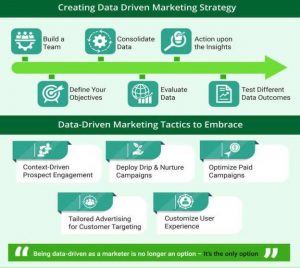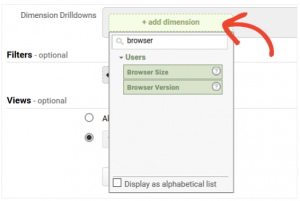There’s something undeniably appealing about exceptional writing. It’s what keeps us awake until 3 a.m. to finish a good book. Online, it’s what makes you continue to click through articles to read more of what a blogger writes.
The appeal and proven success of content marketing have made the world a noisy place. Now, just about anyone with any level of writing talent can start a blog.
To attract a following and make money from your writing, you need to make it flow. The structure of your post has a direct effect on how many people get sucked into your posts and continue to click through to read more, more, more from you.
Although structure can sometimes limit the creative process, there are a few best practices for writing blog posts. Follow these and you’ll consistently hook your readers.
“No one can really predict how well a piece of content is going to go over with your readers… BUT what we can do is increase the odds of your content becoming a winner…” ~Charles Edgar @CharlesEdgar6
Word Count
One of the biggest debates is word count. How long should a high quality blog post be?
Some experts believe shorter is better. Think of Seth Godin’s style of writing.
Others believe longer is the key to gaining more search engine traffic and delivering substance to the readers. Think of Neil Patel’s style of writing.
Digging in deeper, serpIQ ran a test to determine the word counts of the posts ranked highest for the top 20,000 keywords. The results showed that to rank in the top 10 results for any keyword, having a long post (2,000 words or more) is better.
SEOmoz ran a similar test and again found a positive correlation between longer posts and higher rankings.
As interesting as these studies are, blog experts will tell you to never write for search engines. Instead, you should always write with the reader on the other side of the screen in mind. In that case, shorter is probably better because people are busy and could get easily intimidated by longer posts.
What’s right for your blog? It depends.
There is no golden rule here. Seth Godin has built a name for himself with shorter prose while Neil Patel is constantly attracting followers with long posts. The choice is yours.
Run a test on your blog. Try posting a long post once a week (or however often you’re able to) and a few short ones intermittently in between. See which ones perform best. What are people responding to? What feels most natural for you? You’ll find your answer through a little bit of A/B testing.
Sub-Headings
Regardless of post length, you’ll probably need to split your content up into fun-sized chunks to protect the readability of your blog post. To do this, you need subheadings.
Subheadings are your H2 or H3 tags in the post. This is HTML code that signals to Google what subsections are in your blog. Include a keyword in a sub-heading and you’re more likely to rank higher.
The number of sub-headings you should use is similar to the number of words you should use – it depends.
Consider the post you’re writing. If it’s a list post, you’ll want to use a subheading for each item on your list. If you’re writing an opinion piece, break up your content into sections like a book would break up the writing into chapters.
When using sub-headings, make them pop.
Sub-headings should use a clear, easy-to-read typeface. The more you embellish your fonts, the more you’ll fatigue your reader. Keep your type simple and in line with the type of content you’re writing.
Paragraphs
 As you fill in your blog with content, look carefully at your paragraphs. To improve the readability of your blog post, keep your paragraphs succinct.
As you fill in your blog with content, look carefully at your paragraphs. To improve the readability of your blog post, keep your paragraphs succinct.
The golden rule for paragraph length is two to three sentences. Never use more than four.
Keeping your paragraphs short, you’ll make your posts easier to skim, which most online readers do these days. Your post will look more inviting and less intimidating, drawing in readers and keeping their attention for longer.
Bulleted Lists
If you have a list of items you need to break down within a paragraph, opt for a bulleted list.
Bullets are best used when you want to organize a piece of content. They make it easy for people skimming an article to glance over and draw out something valuable from your content.
Keep your bullets short. Don’t use a bullet point in lieu of a sub-heading. Instead, use it to segment your information so it’s easy to absorb.
Quotes
Have you ever read a quote from someone and were floored by its refined way of outlining a certain topic? Quote it on your blog.
Quoting authorities in your field won’t diminish your credibility. It’s more likely to improve it because you’re well-read and well-versed in what’s happening in your industry.
When quoting someone, use it as an opportunity to solidify your point.
Links
Whenever you quote someone or reference another article, it’s vital you include a link. This improves your credibility and offers some love to the influencer who gave you the nugget of information.
The Internet is full of URLs for you to link to. Not all of them are worthy of receiving a link from your blog. Before you link to a source, consider:
- Is the link to a reliable source (preferably the original source)?
- How hard will it be for my reader to find the information in the link?
- Whose information is this? Always link to an influencer whenever possible.
Add links strategically. Every link in your post should take your reader on the next step in his journey with your writing.
Get as specific as possible with your links. Instead of linking to a main blog page, link to the specific blog post you’re referencing. If you’re not sure you need to link out, don’t.
Writing Your Blog Post
Writing a blog post doesn’t have to feel overwhelming. With a little bit of healthy structure, your points will become clearer and more enjoyable to read.
Digital & Social Articles on Business 2 Community
(73)








